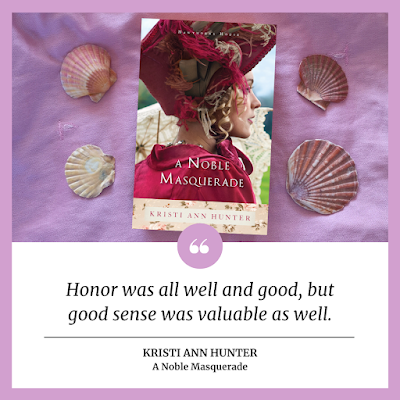An easy-to-read Regency romance with intriguing servants, undercover spies, and secret letters
The scenario
Lady Miranda Hawthorne wants to be courted for who she is and not because her brother is a Duke. She pours out her frustration in letters to her brother’s old friend, the Duke of Marshington, who disappeared some years before. Of course, she never intends to send them. But her brother’s new valet, the intriguing Marlow, does not know never to send her blue letters and mistakenly sends one. Miranda is embarrassed when she gets a reply, but the fact that Marlow knew where to send it makes her suspect there are things her brother is not telling her, and that his valet is not all that he seems.
What I really liked
I found Hunter’s style easy to read and enjoyed being introduced to the Hawthorne family with their strong family loyalties. My favourite part was Miranda’s secret letters to the Duke of Marshington written on blue paper and I thought they added an exciting aspect to the plot. I felt the faith elements were woven into the story in a natural way. I also loved Marshington’s array of interesting servants, particularly Jess.
If you have read some of my other reviews, you may have learned that I love to know when a book is set, and Hunter tells us that the prologue is set in 1800 and the main part of the action takes place in 1812.
Ice skating on the Serpentine
Hunter makes a brief reference to skating on the Serpentine. During severe winters in Regency England, the Serpentine River in Hyde Park often froze over and attracted people from all walks of life to come and skate. The skaters were mostly men, but there were occasional newspaper reports of women on the ice.
You can read more about Regency ice skating here.
What was Bedlam?
At one point, Miranda thinks she is going mad, and she talks of taking herself off to Bedlam. You may be familiar with the word bedlam, meaning a scene of confusion, but you may not realise that it comes from Bedlam – a psychiatric hospital in London.
The Hospital of Saint Mary of Bethlehem was originally a priory, and was given by Henry VIII to the city of London for the cure of lunatics. It was also known as the Bethlem Hospital and colloquially as Bedlam. Hence the term Bedlamite, meaning an insane person, which my online etymological dictionary says dates from 1620s. It was notorious for allowing visitors to ogle at the mad inhabitants, but this practice was later stopped.
A few Americanisms
As a Brit, I am used to coping with American spelling and terminology, but there are a few things I struggle with. The floor level is one that gets me every time. Our ground floor is an American first floor, but once I remember this, I can still picture the scene. However, I don’t often come across phrases that I don’t understand and confess I had to run to Google to tell me what gobs, shuck and conniptions meant.
One word that didn’t work for me in the Regency England setting was school. Brits don’t use the word school to refer to university. Eton and Harrow are schools; Oxford and Cambridge are universities. I felt that Oxford should have been referred to as university, not school, particularly in speech.
There were one or two historical details that I queried, and I did not feel that the spy element of the story was resolved to my entire satisfaction. But none of these things undermined the great storytelling and for me, that is the key thing.
I loved this book and look forward to reading more by Kristi Ann Hunter.
Clean and sweet?
Heat level low – just kissing.
Christian characters with prayers and faith references but no sermons.
No swearing.
Some mild violence, but no gruesome details.
5 stars Highly recommended
Find out more about Rachel's books and sign up for her newsletter here.






